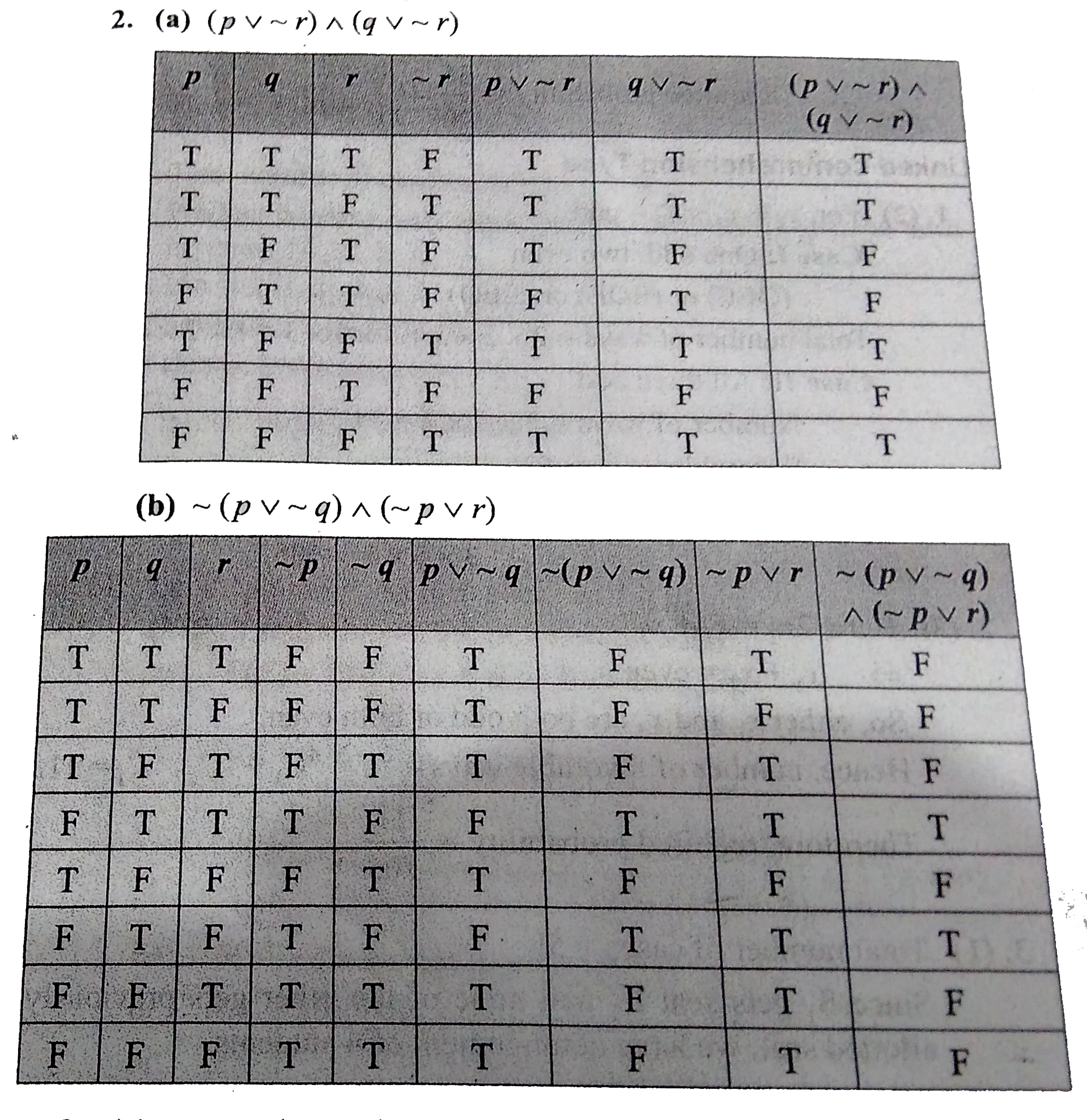Find the truth values of the following compound statements :
(a)(p∨~r)∧(q∨~r) (b)~(p∨~q)∧(~p∨r) Solution in Bengali
Topper's Solved these Questions
- BOOK - CENGAGE PUBLICATIONCHAPTER - MATHMETICAL REASONINGEXERCISE - Single correct answer type38videos
MATHMETICAL REASONING
- BOOK - CENGAGE PUBLICATIONCHAPTER - MATHMETICAL REASONINGEXERCISE - Archives10videos
MATHMETICAL REASONING
- BOOK - CENGAGE PUBLICATIONCHAPTER - MATHMETICAL REASONINGEXERCISE - Archives10videos
MATHMETICAL REASONING
- BOOK - CENGAGE PUBLICATIONCHAPTER - LOGARITHM AND ITS PROPERTIESEXERCISE - JEE ADVANCED1videos
LOGARITHM AND ITS PROPERTIES
- BOOK - CENGAGE PUBLICATIONCHAPTER - MATRICESEXERCISE - All Questions509videos
MATRICES
Similar Questions
Which of the following is not a statement.
07:32View SolutionStatements -1 : ~(p↔~q) is equivalent to p↔q
Statement-2: ~(p↔~q) is a tautology.03:28View SolutionStatements -1 : ~(p↔~q) is equivalent to p↔q
Statement-2: ~(p↔~q) is a tautology.View SolutionLet (x0,y0) be the solution of the following equations: (2x)1n2=(3y)1n3 31nx=21ny The x0 is 16 (b) 13 (c) 12 (d) 6
08:06View SolutionIn which of the following type of matrix inverse does not exist always? a. idempotent b. orthogonal c. involuntary d. none of these
07:04View SolutionFind the truth values of the following compound statements :
(a)(p∨~r)∧(q∨~r) (b)~(p∨~q)∧(~p∨r)07:40View Solutionकथन ~(p∨~q) के लिए सत्यमान सारणी ज्ञात कीजिये
07:03View Solutionप्रत्येक के लिए सत्यमान सारणी बनाइये
(p∨q∨r)∧(~p∨q∨~r)∧(~p∨~q∨~r)06:34View Solutionसत्यमान सरणी से निम्न को सिद्ध कीजिये
p∨(q∧r)≡(p∨q)∧(p∨r)05:50View Solutionकिन्ही तीन कथनो p,q व r के लिए सिद्ध कीजिये कि
p∨(q∧r)≡(p∨q)∧(p∨r)02:29View SolutionIf p, q, r be anY three. statements
STATEMENT-1 : p∨(q∧r)⇔(p∨q)∧(p∨r)
and
STATEMENT-2 : p∨(q∧r)=(p∨q)∧(p∨r)07:57View SolutionFind the truth values of the following compound statements :
(a)(p∨~r)∧(q∨~r) (b)~(p∨~q)∧(~p∨r)01:00View SolutionUsing truth table prove that p∨(q∧r)=(p∨q)∧(p∨r)
View SolutionIf p, q, r be anY three. statements
STATEMENT-1 : p∨(q∧r)⇔(p∨q)∧(p∨r)
and
STATEMENT-2 : p∨(q∧r)=(p∨q)∧(p∨r)View SolutionLet p, q, r be three statements. Then, ~(p∨(q∧r)) is equal to
a)(~p∧~q)∧(−p∧r) b)(~p∨~q)∧(~p∨~r)
c)(~p∧~q)∨(~p∧~r)d)(~p∨~q)∨(~p∧~r)View Solution


